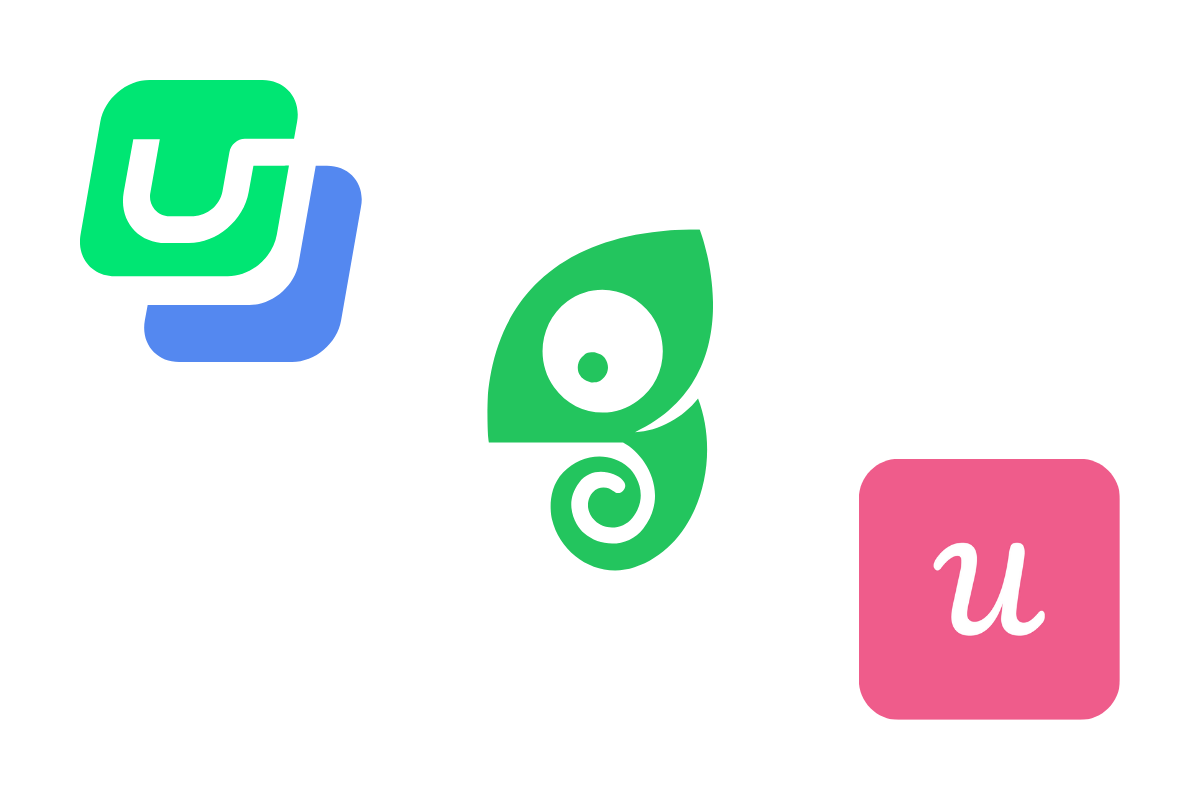Your product team has been working overtime for months. The new feature is finally live, yet your analytics show the same depressing story: 70% of users never find it, let alone use it. Meanwhile, your customer success team is drowning in tickets asking how to do things that should be obvious.
This isn't a product problem — it's a guidance problem. And throwing more documentation at it won't help when users expect to learn by doing, not reading.
In-app guidance tools can transform confused users into power users without eating up your engineering resources. The challenge? Picking between platforms like Chameleon, Userflow, and Userpilot when they all promise to solve the same problems but take wildly different approaches.
One focuses on speed and simplicity. Another leans heavily on built-in analytics. The third (that’s us at Chameleon) believes your in-app experiences should feel like a natural extension of your product — while also giving you automation, AI, and embeddable patterns to go further. Let’s cut through the marketing speak and figure out which actually delivers for your situation.
Chameleon vs Userflow vs Userpilot: At-a-Glance Comparison
Feature | Chameleon | Userflow | Userpilot |
|---|---|---|---|
Starting Price | Free forever plan available | $240/mo (10,000 MAUs) | $249/mo (2,000 MAUs) |
Paid Plans Start | $279/mo Startup | $240/mo Startup | $249/mo Starter |
Free Plan | Yes (unlimited interactive demos) | 14-day trial | 14-day trial |
Best For | Teams wanting native-feeling, scalable experiences | Quick deployment, simple flows | Mid-market teams needing built-in analytics |
Key Strength | Free interactive demos, deepest customization, advanced AI automation | Fast setup, Kanban builder | Built-in product analytics |
Main Limitation | Some CSS helpful for advanced styling | Limited analytics, no unified dashboard | Steeper learning curve |
Setup Time | Days to weeks | Hours to days | Days to weeks |
No-Code Level | ~90% no-code | ~95% no-code | ~85% no-code |
Mobile Support | Web-based responsive | Web-based only | Web-based only |
Deep Dive: Understanding Each Platform
Chameleon: Beyond the Basics of Onboarding
Chameleon covers all the onboarding fundamentals — modals, tooltips, slideouts, checklists — but goes far beyond them. Our embeddable patterns let you create experiences that feel native to your product, not bolted on, including inline nudges, banners, and interactive components that blend seamlessly into your UI.
The standout? Interactive demos that you can embed anywhere — your marketing site, help docs, or directly inside your product — and they’re free forever. These aren’t just walkthroughs; they double as self-serve education tools for prospects and customers.
For paid plans, you can supercharge this with AI+ functionality as an add-on: simply walk through a feature once while narrating, and Chameleon automatically generates a launch kit — interactive demo, in-app tour, microsurvey, and even social media copy — all synced to your product updates.
Customization is deep. While you can launch without touching code, CSS skills unlock limitless styling options. Our automation and AI agent capabilities let you build sophisticated behavioral triggers — for example, showing a tooltip only if a user has visited a page three times but never clicked a key button.
Userflow: The Speed-First Builder
Userflow’s biggest selling point is speed. Their Kanban-style builder lets you visually map out flows before publishing them to your app, making it easy to plan complex branching without touching code. Many teams go from install to first live flow in under an hour.
However, this simplicity has trade-offs. Analytics are bare-bones — no single dashboard can track experience performance across the product. Customization is functional but limited; you’ll get clean, brand-matched patterns, but they won’t rival more advanced styling options.
Pricing is straightforward and generous on MAUs, starting at $240/month for 10,000 users. But core features like localization and advanced integrations live in higher tiers.
Userpilot: Built-In Analytics + Guidance
Userpilot positions itself as more than an onboarding tool — it’s a product growth platform with guidance, feedback, and analytics in one place. Alongside tours, modals, and tooltips, it offers native analytics like funnel tracking, feature adoption reports, and cohort analysis without requiring external integrations.
This makes Userpilot appealing for teams that want everything in a single platform. But with that breadth comes complexity: the interface is denser, and setup takes longer than with Userflow or Chameleon.
Its Chrome extension allows you to build directly in your app, and the resource center feature lets you create an in-app hub of help articles, videos, and announcements. That said, pricing starts at $249/month for 2,000 MAUs, and many teams find they need the $799/month Growth tier for the full feature set.
Feature Face-Off
Creation Speed & Ease of Use
Winner for Speed: Userflow — ultra-fast setup, live in hours.
Balanced Approach: Chameleon — AI creation accelerates setup while still offering deep customization.
Most Setup Time: Userpilot — more features to learn before going live.
Customization & Design
Most Advanced: Chameleon — embeddable patterns, deep (optional) CSS styling, native look and feel.
Solid but Conventional: Userpilot — strong within standard UI patterns.
Basic but Effective: Userflow — clean brand-matching, fewer creative options.
Analytics & Insights
Strongest Native Analytics: Userpilot — funnels, cohorts, adoption tracking built in.
Integration-First Approach: Chameleon — deep two-way connections with existing analytics stack.
Weakest Analytics: Userflow — no unified dashboard.
Targeting & Segmentation
Most Sophisticated: Chameleon — fine-grained behavioral triggers, advanced segmentation.
Comprehensive & Accessible: Userpilot — visual segment builder, robust attribute targeting.
Covers the Basics: Userflow — simple event and property triggers.
Integrations
Most Extensive: Chameleon — 40+ two-way integrations, CRM, analytics, CDP support.
Solid Range: Userpilot — fewer integrations, some locked to higher tiers.
Basic Coverage: Userflow — core analytics and CRM tools only.
Chameleon, Userflow, Userpilot... Which Tool Will Fit You Best?
Choose Chameleon if:
You want onboarding and guidance that feel like part of your product.
Interactive demos are part of your product marketing, product, or support strategy.
You need deep customization, behavioral targeting, and automation.
Transparent pricing and a free forever option matter.
Choose Userflow if:
You need something live today.
Your use cases are straightforward and analytics aren’t critical.
You want a generous MAU allowance for a low price.
Choose Userpilot if:
Built-in analytics is a top priority.
You want one tool for guidance, feedback, and analytics.
You have the budget and bandwidth to implement a more complex system.
Why Chameleon is Different
Most in-app guidance tools either focus on speed (at the cost of polish) or analytics (at the cost of flexibility). Chameleon takes a third path: deeply customizable, native-feeling experiences — at scale.
Our free, forever interactive demos mean you can start improving feature discovery today, without touching your budget. When you’re ready, you can layer in advanced automation and AI capabilities to turn a single walkthrough into a complete launch kit for every channel.
Guidance shouldn’t feel like an interruption. With Chameleon, it feels like part of your product.
The Bottom Line
Userflow: Fast, functional, but light on analytics and customization.
Userpilot: Analytics-rich, but with a steeper learning curve and higher cost for full value.
Chameleon: Native-feeling, customizable, automation-ready — with free forever Demos.
If you want to start today, keep costs predictable, and deliver guidance your users enjoy give Chameleon a go.

